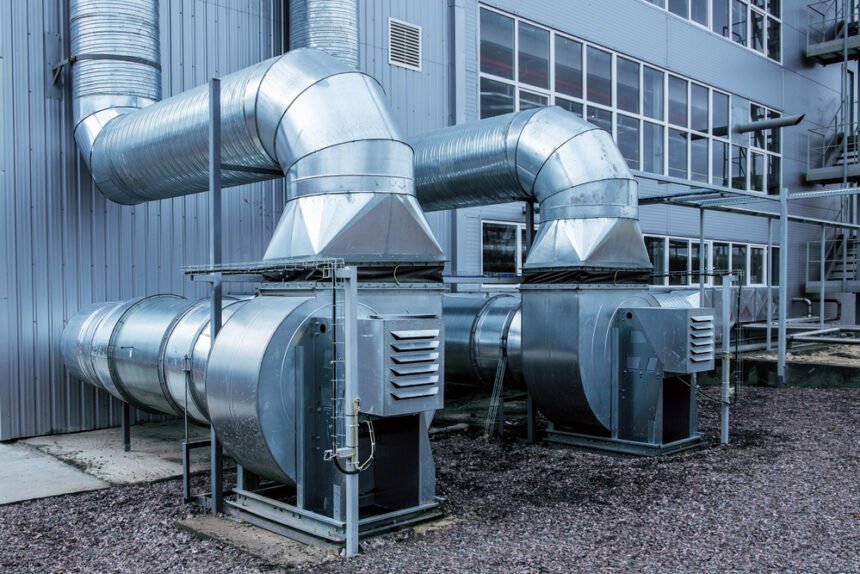Industrial fume extractors play a crucial role in maintaining a safe and healthy work environment by removing harmful fumes and particles from the air. With the growing awareness of the importance of clean air in the workplace, the demand for efficient fume extraction systems has increased significantly. In this comprehensive guide, we will discuss the installation and maintenance of industrial fume extractors, and how they can help improve the air quality in your facility. So, let’s dive in and explore the world of fume extraction systems.
What is an Industrial Fume Extractor?
An industrial fume extractor is a device designed to remove harmful fumes, dust, and particles from the air in a workplace. These systems are commonly used in industries where processes generate hazardous airborne contaminants, such as welding, metalworking, chemical processing, and manufacturing. By capturing and filtering these pollutants, fume extractors help maintain a safe and healthy work environment, protect workers from respiratory illnesses, and comply with regulatory standards for air quality.
Types of Fume Extraction Systems
There are several types of fume extraction systems available in the market, each with its own unique features and applications. Some of the most common types include:
Portable Fume Extractors: These are compact and mobile units designed for small-scale operations or temporary workstations. They are easy to move and can be placed close to the source of fumes for efficient extraction.
Centralized Fume Extraction Systems: These are large-scale systems designed to serve multiple workstations or an entire facility. They consist of a central extraction unit connected to a network of ducts and hoods that capture fumes from various locations.
Downdraft Tables: These are workstations with built-in fume extraction systems. They feature a perforated surface that draws fumes and particles downwards, capturing them before they can disperse into the air.
Filter-Based Systems: These systems use filters, such as HEPA or activated carbon, to capture and remove contaminants from the air. They are suitable for applications where the contaminants are primarily particulate matter or odors.
Factors to Consider Before Installing a Fume Extractor
Before selecting and installing a fume extraction system, it is essential to consider several factors to ensure optimal performance and efficiency. These factors include:
Type of Contaminants: Identify the specific contaminants generated by your processes to select the appropriate extraction system and filters.
Volume of Fumes: Determine the volume of fumes generated to select a system with adequate extraction capacity.
Workspace Size and Layout: Consider the size and layout of your facility to determine the best placement of extraction units and ductwork.
Regulatory Requirements: Ensure that the chosen system meets local and federal regulations for air quality and worker safety.
Installation of Industrial Fume Extractors
Proper installation is critical for the efficient operation of a fume extraction system. Here are some essential steps for the installation process:
- Select the appropriate location for the extractor unit, ensuring it is close to the source of fumes and easily accessible for maintenance.
- Install the ductwork and hoods, taking care to avoid sharp bends, long horizontal runs, and obstructions that could reduce airflow.
- Connect the extractor unit to a power source and verify that it is functioning correctly.
- Perform an initial system test to ensure proper airflow and capture of contaminants.
Maintenance of Fume Extraction Systems
Regular maintenance is essential for the efficient operation and long life of a fume extraction system. Some key maintenance tasks include:
- Inspecting and cleaning filters regularly, replacing them as needed.
- Checking and cleaning the ductwork and hoods to ensure unobstructed airflow.
- Inspecting and servicing the extractor unit, including checking for worn or damaged components and ensuring proper motor function.
- Monitoring system performance and making adjustments as needed to maintain optimal efficiency.
Benefits of Regular Fume Extractor Maintenance
Regular maintenance of your fume extraction system offers several benefits, including:
- Improved air quality and a safer work environment for employees.
- Compliance with regulatory standards for workplace air quality.
- Reduced risk of system breakdowns and costly repairs.
- Extended lifespan of the fume extraction system and its components.
Conclusion
Investing in a high-quality industrial fume extractor is a crucial step in ensuring a safe and healthy work environment. By considering factors such as the type of contaminants, volume of fumes, workspace size, and regulatory requirements, you can select the most suitable fume extraction system for your facility. Proper installation and regular maintenance are essential for optimal performance and longevity of the system. By following the guidelines outlined in this comprehensive guide, you can effectively maintain and improve the air quality in your workplace, protecting your employees and your business.




